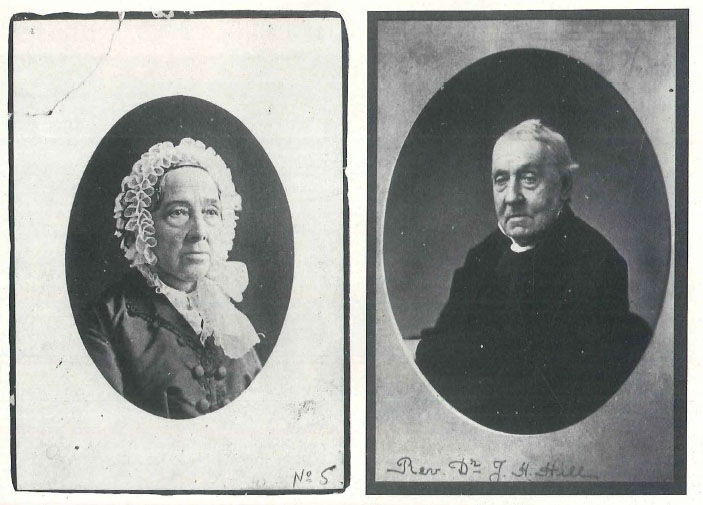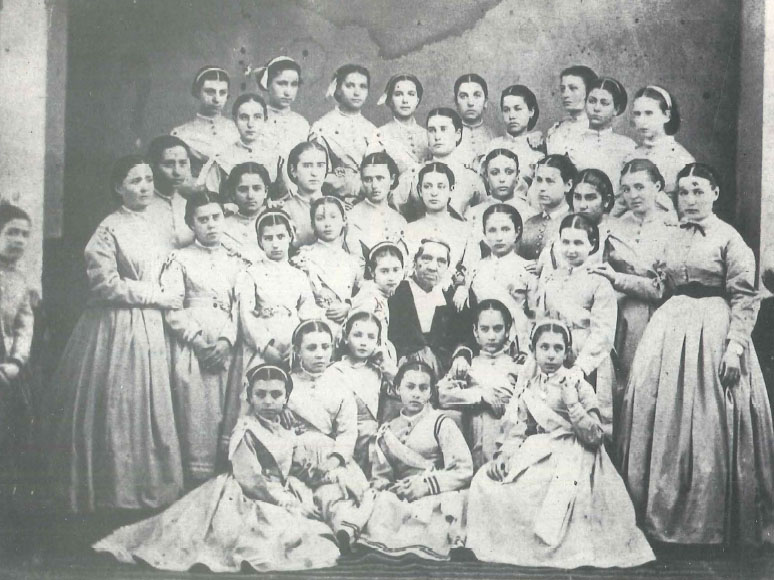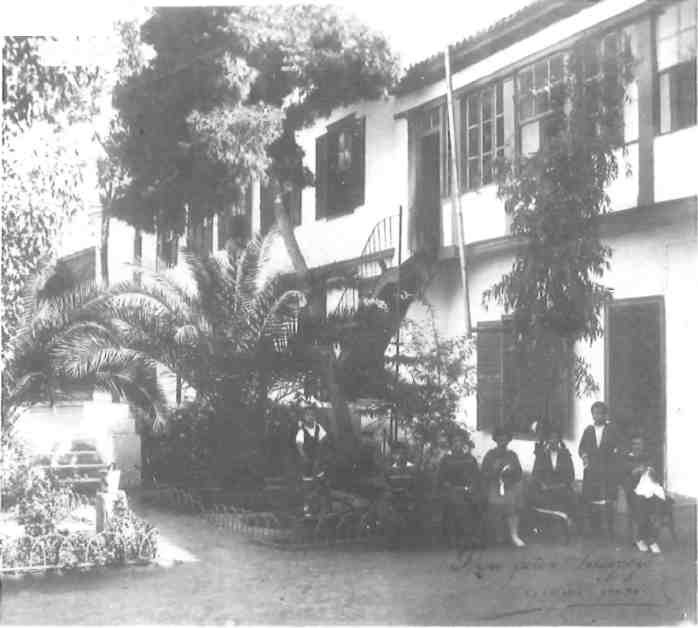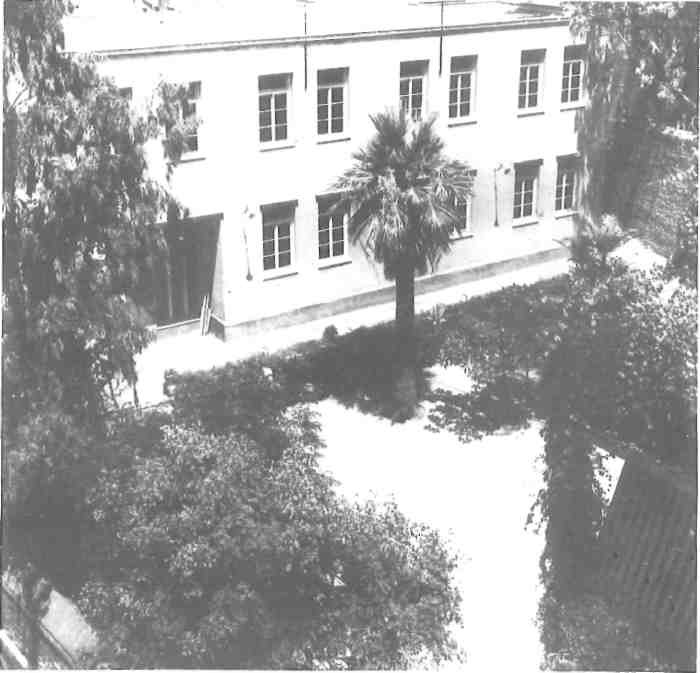Just 160 years ago this month, a school for girls was being established in Plaka, by an Episcopalian missionary, John Henry Hill and his wife, Francis Fanny Mary Mulligan Hill.

They sailed from Boston on October 1, 1830 following the wave of philhellenism sparked in America by those who had already offered their services to a new country which was striving for liberty.
A number of American missionaries had taken upon themselves the task of establishing schools on newly-liberated Greek soil. Most of these were short-lived, their development curtailed by financial constraints, suspicion and sometimes overt local animosity.
Determined to preserve their own identity, in great part defined by Orthodoxy which had taken such an active and courageous role in education during the centuries of Ottoman rule, Greeks were uneasy, even with philhellenes, whom they feared might achieve what they had so far been unable to do themselves.
The Hills set themselves an arduous but rewarding task, and the seeds they sowed were strong enough to override the difficulties of their time, and the results flourish today.
In Greek, a school for girls is parthenagogeion, meaning, a school for virgins, that is, young girls, in the knowledge that, as a later missionary in Greece, John Henry House, put it, “with a boy you educate a man; with a girl, you educate a whole family.” Appropriately, the Hills founded their unique school in the shadow of the Parthenon, at the foot of the Acropolis.

There wasn’t much to see around Plaka in the early summer days of 1831. Nafplio was still the capital of the partly liberated nation. Ten years of war had created a population of orphans in Athens and a mass of ruins. Rumors had it that Athens was the capital to be, yet not even the most basic structure was available to that prospect.
After persistent search, John Hill discovered a solid building with a Venetian tower in Plaka, but no place to house his school. In a practical manner, the couple settled on the upper floor and arranged the basement as a place for students to come. They had 20 on the first day of classes and 167 within two months. Thus a desperate need for another teacher arose. The Hills addressed themselves to the Reverend Hildner, priest of the Anglican church on the island of Syros who had tried to create a school a couple of years earlier. His response was positive and a Greek teacher arrived in Athens, only to leave everyone speachless: it was a twelve-year-old girl.
Born in Crete, Elissavet Kontaxaki, proved to be a perceptive teacher much loved by both adults and children. In his book Wanderings in Greece, published in London in 1837, George Cochrane writes of her: “There is also another lady who teaches in the establishment. She comes from Crete, is about sixteen years of age and very interesting, and appears to have great influence over the minds of her companions whom she was teaching. She is a most agreeable and fascinating person and is always present at Mr Hill’s conversations in the evening and has learnt to speak English very well.” Her language teacher was, of course, Fanny Hill.
John Hill who had been a merchant and a bank cashier in New York before he studied for the ministry at the Episcopal Theological Seminary in Alexandria, Virginia, was quick to realize they had to own their premises if they wished to set roots in Athens. They bought a piece of land at the north of the Parthenon but did not have enough money to build. It was then that Mr Hill noticed an article printed in an American newspaper about a sum of money offered for building schools in Greece. The sum had been raised by a club of ladies from Troy, next to Albany, New York. Thus considerable assistance made possible the construction of new premises. Mrs Hill proposed that the school be called the Troy Institute, and it was commonly known as the Troy School.
The wave of support was building up. Lady Byron, always interested in education in Greece, sent a contribution from England. In America the Ladies Magazine of Boston coordinated an appeal by keeping its readers informed about the creation of a “ladies” school in Athens.
On this part of the world, however, Mr Hill was having difficulties in receiving the money. He had to travel to Smyrna in Asia Minor in order to cash his accounts. Each voyage lasted between four to six weeks. The Aegean crossing was dangerous for, in those days, pirates were still active.
One day the solution presented itself: an Ottoman friend of Mr Hill was grumbling about going to Smyrna to carry a sum of money to his brother. Mr Hill offered him an arrangement whereby the money would reach his brother via the Hills’ account representative in Smyrna and, when this was done, he would pay Hill in Athens. No travels, no pirates: Mr Hill was a practical man.
The years between 1832 and 1840 showed a period of expansion in the educational activities of the Hills in which they were supported by Fanny’s three sisters who joint the couple in Athens. The evergrowing number of students, the’ creation of a vocational school for orphans and the infant school, all pointed to the need to educate teachers.
Thus, in 1834, with government approval, the first academy for teachers, or Didaskaleion, started functioning within the Hill school. The government gave grants to 12 girls from all over the country to be trained and return to their home-towns capable of teaching.

In 1835, Mr Hill first rented, and later bought, the property of Charles Holte Bracebridge, an English writer who lived on the corner of Nikodimou and Thoukididou streets in Plaka.
In February 1836, Mrs Hill left for America in a fund raising expedition. She returned in October of the same year having succeeded in raising financial support for five years. At the same time, King Otto presented a gold medal to the Hills in recognition of their services to the nation.
John and Fanny were a sociable and hospitable couple. Morris, a traveller of the period wrote that Mr Hill received more visitors than the court, and the respect paid him by travellers would be flattering to the king himself. Every Tuesday the couple held an open house. Among the visitors were members of the Greek establishment, intellectuals, travellers and educators. The rocking chair which the Hills had brought from America was an added attraction as it was a complete novelty for the Athenian society. Among their distinguished guests the Hills received Florence Nightingale on her way to Crimea. Florence, who had always been fond of animals, acquired two tortoises she called Mr and Mrs Hill.
In 1842 the newspaper Aeon accused the Hills for interfering in the faith of their students. The accusation was soon proven false and the matter was settled but it caused unecessary stress to the missionary couple who had always acted as true Christians. John and Fanny Hill respected and encouraged the religious beliefs of their pupils and practiced theirs, in their own church.
Saint Paul’s Anglican church partly owes its existence to John Hill, its second chaplain, who raised 934 pounds sterling for the building and 82 more for the organ.

What the Hills never anticipated is that their school would be maintained through the female branch of the family. For four consecutive generations women have been directing under the patronyms of Hill, Masson and Alivizatou. Since 1957, the school principals are Mary Alivizatou-Panagiotopolou and Fanny Pitsou-Alivizatou. The fifth generation is well on the way as Minie Panagiotopoulou has already undertaken duties.
Archival material on the Hill Memorial School, together with personal items of its past directors, will be exhibited this autumn in a location to be announced for the celebration of the 160 years anniversary and continuously high standard of education.







